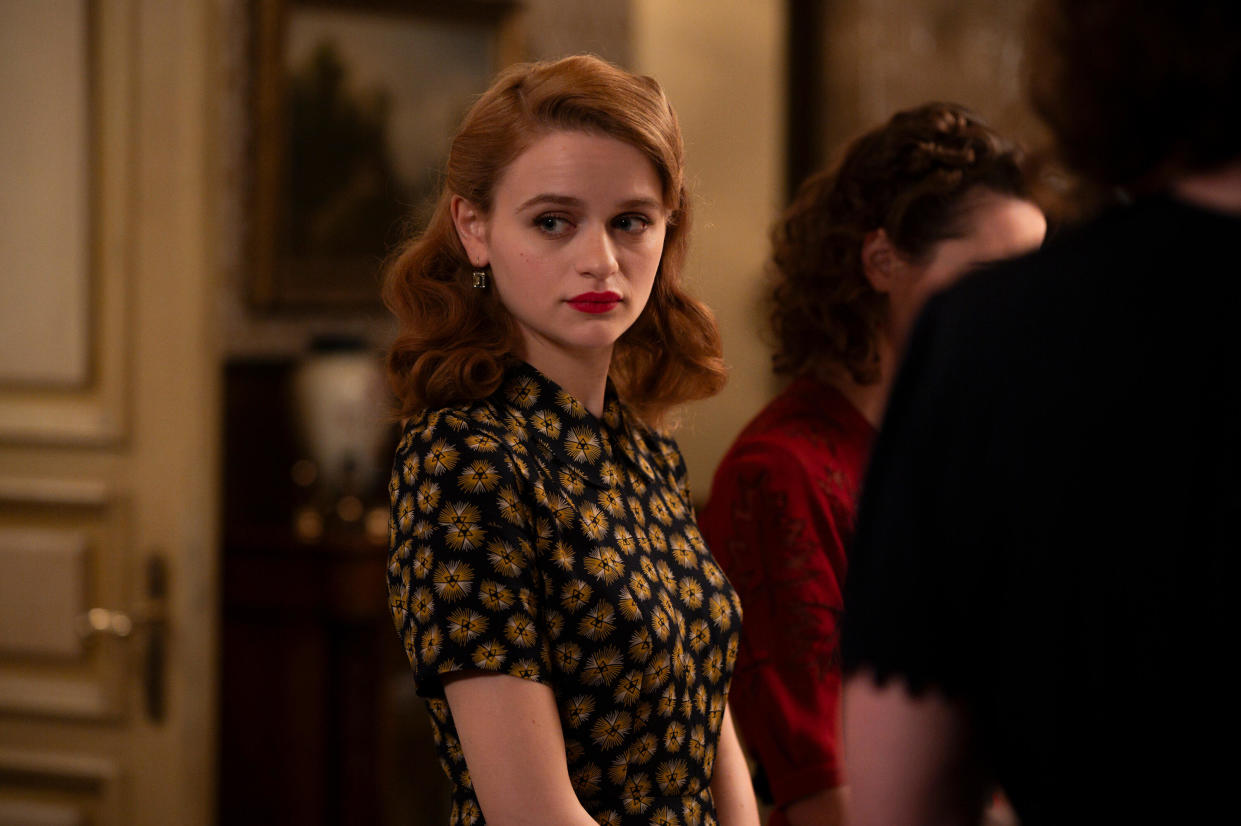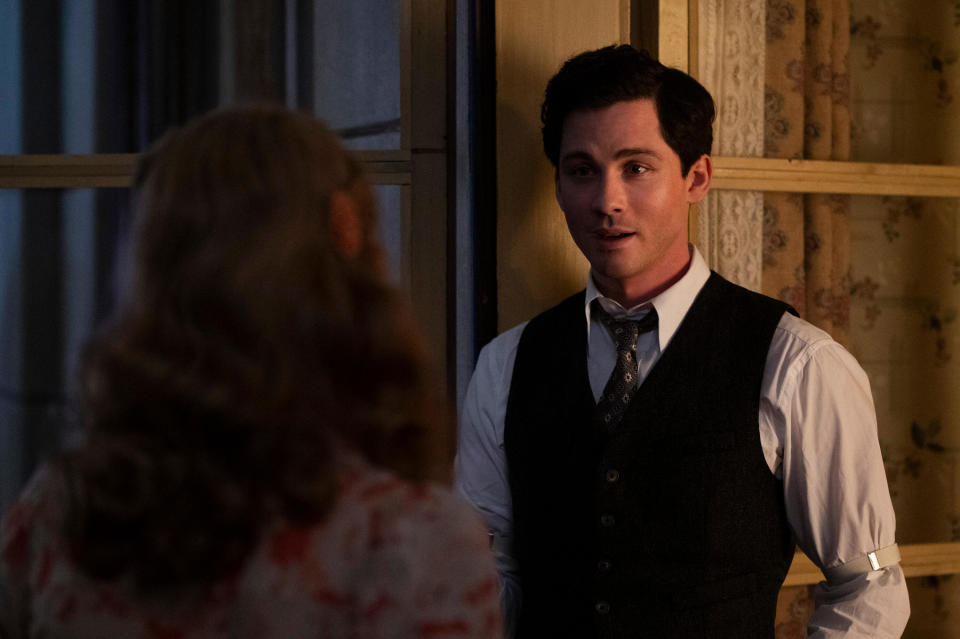To Navigate Its Ensemble, ‘We Were the Lucky Ones’ Turned to ‘Game of Thrones’

- Oops!Something went wrong.Please try again later.
- Oops!Something went wrong.Please try again later.
Director Thomas Kail says that if you were to boil the arc of “We Were the Lucky Ones” down to its essence, then the Hulu limited series is about a large family who has dinner together and then tries to make sure they have dinner together again. Which is no mean feat for any family of 12; it’s an even more impossible ask when it’s a family of Polish Jews during World War II trying to stay one step ahead of the Germans and/or hiding their Jewishness from anti-semites on all sides.
Kail, showrunner Erica Lipez, and the rest of the “We Were the Lucky Ones’” creative team had a number of choices for how to handle the Kurc family story. It could’ve easily followed just Halina (Joey King), the youngest daughter who finds herself drawn into the resistance, or Addy (Logan Lerman), who can only worry about his family from afar as he attempts to flee Europe. In choosing to tell the story of the entire Kurc family and juggle the arcs of each member of it, they ended up looking to some unlikely inspirations for how to balance their ensemble.
More from IndieWire
“One of the things that we talked about early on in terms of the scope of the show, the far-flung-ness of the show, is ‘Game of Thrones.’ That was a show when you were watching it, you might see a character for three straight episodes and they completely go away except for one scene in that next episode, and yet you felt connected to them,” Kail told IndieWire. “We were always talking about this idea of how to make sure that we stayed invested in each of the characters.”
The best technique Kail found for building audience connection to the characters had nothing to do with the ruthless betrayals and war-torn landscapes we associate with both “Game of Thrones” and generic World War II stories. It has everything to do with how, through framing and editing, Kail could keep the audience invested in the family as a unit.
In “Radom,” the first episode of “We Were the Lucky Ones,” Kail shoots the last pre-war Passover Seder in as warm and experiential a way as possible. It’s not only so that the audience feels connected to the characters but also so that pulling in shots from the dinner scene can reinforce characters’ love for each other at a distance later.
There’s always a risk of happy moments within a dramatic story feeling forced or false, so Kail deliberately covered the dinner scene in longer, two- to four-minute takes to let the actors connect to and riff off each other. “We really wanted to feel like we were inside the dinner, so the cameras were on really long lenses or zooms,” Kail said. “We wanted to make sure that we were establishing familiarity, ritual, the family’s customs, because every Passover from family to family is completely different. And then we just really let them go.”
Even if large pieces of those longer takes were cut from the episode, Kail and editor Kate Sanford found a cutting pattern that could quickly show the Kurcs’ connection to each other. The treatment of the dinner sequence became a core part of the series’ visual grammar, as “We Were the Lucky Ones” uses similar montages at key moments to keep the Kurcs together even when they’re apart.
“It was important for us to establish those deep connections and to do it in a way that felt like we were not telling people they should love this family. We were showing them why they should,” Kail said.
Those connections ended up being so strong that “We Were the Lucky Ones” opens the series with a montage in which we catch glimpses of the entire family as Halina gets some (still to be revealed) good news after the end of the war. The creative team had not planned on making this the show’s opening moment, but it felt right once the series began to assert itself in the editing process.

“I have a friend who said something that feels appropriate about making television or making a movie, which is that prep is like menu planning and shooting is like shopping, and then cooking is the edit,” Kail said. “Talking about what that initial moment could be, we thought about is there a way to introduce the propulsion that the series will have, the far-flung experience that each of the family members will have, and then also to center us in Halina’s experience as someone who’s going to take us through this.”
According to Kail, the secret sauce to doing an ensemble series well is not being afraid to focus on different characters throughout the story while keeping the ensemble present through the family’s feelings for one another.
That emotional linking of the characters through the edit becomes increasingly pronounced as the series goes on. “Rhythmically, there were things that we thought would play in one place in the script, and then once we got into the edit, they just started to move and reveal where they actually needed to be,” Kail said. “Especially [when we’re] deeper into the series, when we knew that the audience understood the pattern of the show, they knew who everybody was, it gave us a freedom to start to move in a slightly different way.”
New episodes of “We Were the Lucky Ones” stream Thursdays on Hulu.
Best of IndieWire
The 12 Best Thrillers Streaming on Netflix in April, from 'Fair Play' to 'Emily the Criminal'
Quentin Tarantino's Favorite Movies: 61 Films the Director Wants You to See
Sign up for Indiewire's Newsletter. For the latest news, follow us on Facebook, Twitter, and Instagram.

